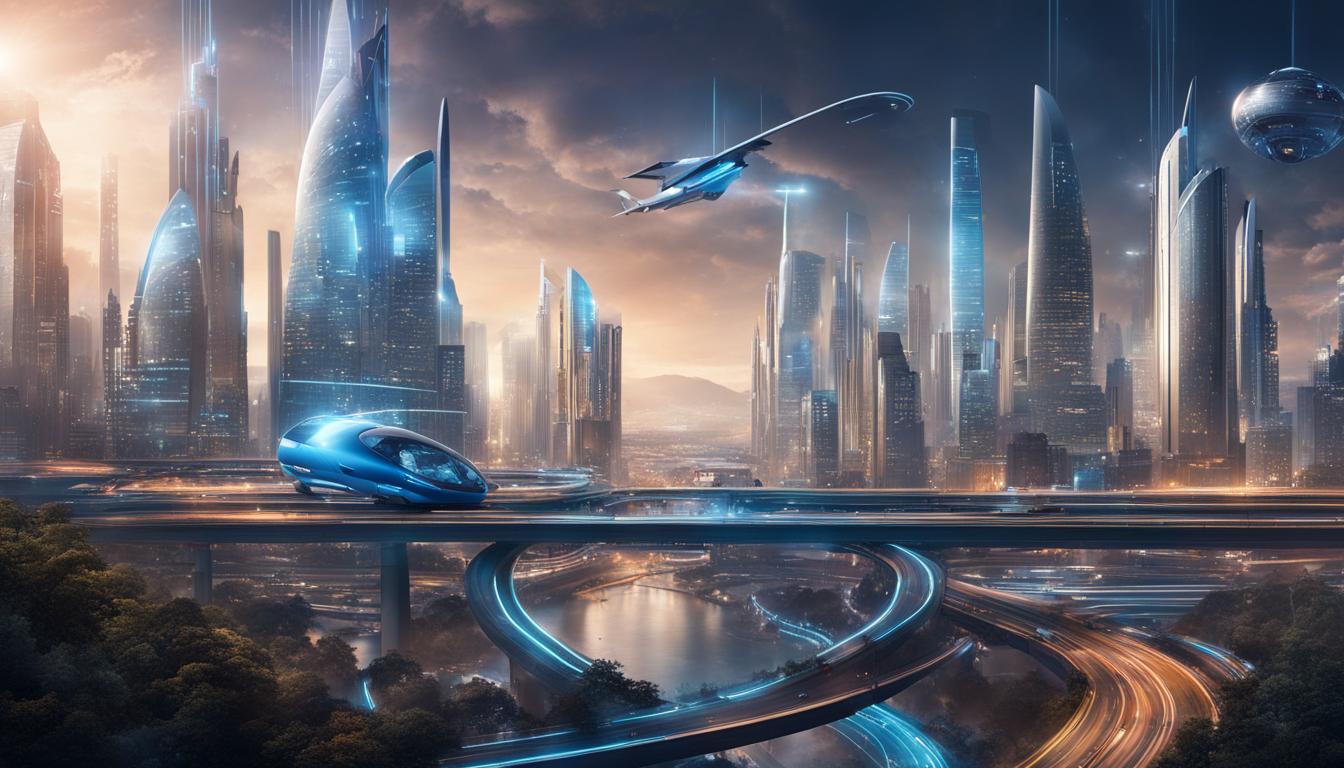Are you prepared to explore the realm of immersive VR gaming?
In this how-to guide, we’ll show you how we’ve harnessed the power of generative AI to create realistic environments and characters, enhancing gameplay with AI-generated content.
With our step-by-step instructions, you’ll learn how to implement AI-driven immersive experiences that will transport you to new worlds.
Get ready to break free from the constraints of reality and unleash your imagination in the realm of virtual reality gaming.
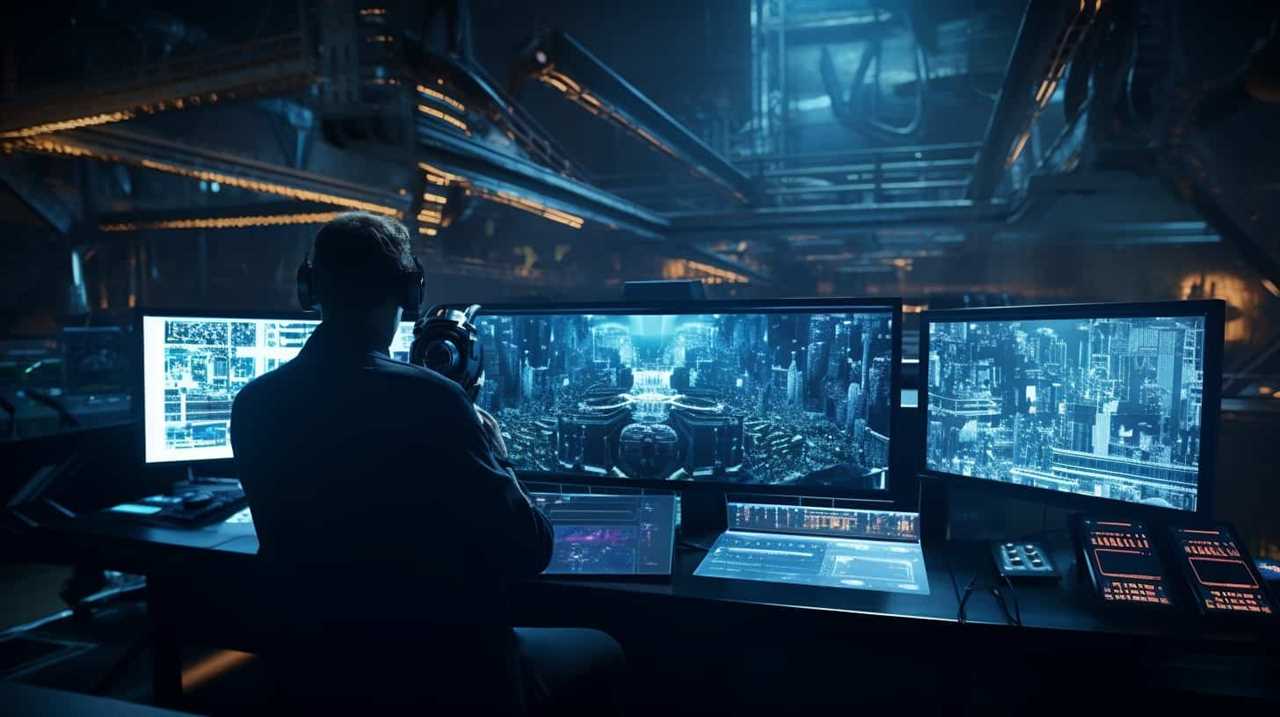
Let’s get started!
Key Takeaways
- Virtual reality hardware enhances immersion and presence in gaming.
- Generative AI can revolutionize the creation and experience of VR games.
- AI-generated content enhances gameplay with dynamic and unpredictable elements.
- AI-driven immersive experiences adapt to player actions and create personalized narratives.
Understanding Virtual Reality Gaming
To fully grasp the concept of virtual reality gaming, we must delve into the intricacies of interacting with computer-generated environments through immersive experiences.
Virtual reality (VR) hardware plays a crucial role in this process, as it enables users to step into a digital world and engage with it on a whole new level. From headsets that provide a 360-degree view to motion controllers that allow for natural and intuitive interactions, the hardware is designed to enhance the sense of presence and immersion for players.
Additionally, virtual reality storytelling is another key aspect of VR gaming. It involves creating narratives and experiences that transport players into compelling virtual worlds, allowing them to become active participants in the story.

Harnessing the Power of Generative AI
Now, let’s delve into how we can leverage the power of generative AI to enhance the immersive experience of VR gaming. Generative AI applications have the potential to revolutionize the way we create and experience virtual reality games. One exciting area where generative AI can be applied is in AI-generated storytelling. By using advanced algorithms, generative AI can dynamically generate unique narratives and adapt them based on player choices and actions, creating a truly personalized and immersive gaming experience. To illustrate the potential of generative AI in storytelling, let’s take a look at the following table:
| Player Action | AI Response |
|---|---|
| Player selects a character | AI generates a backstory for the character |
| Player explores a new location | AI generates a unique quest or event |
| Player makes a decision | AI adjusts the narrative and consequences |
Creating Realistic Environments and Characters
In our guide on creating immersive VR gaming with generative AI, we’ll explore the process of creating realistic environments and characters using advanced algorithms.
To achieve lifelike avatars, we utilize generative AI models that can generate highly detailed and realistic character models. These models can capture intricate facial expressions and body movements, giving players a sense of presence and immersion in the virtual world.
Additionally, we simulate dynamic weather conditions, such as rain, snow, and wind, to enhance the realism of the environments. This creates a more immersive experience, allowing players to feel like they’re truly part of the game world.

By incorporating these techniques, we can create virtual environments and characters that are indistinguishable from reality.
Now, let’s move on to the next section where we’ll discuss how AI-generated content can enhance gameplay.
Enhancing Gameplay With Ai-Generated Content
Our team utilizes AI-generated content to enhance gameplay in immersive VR gaming experiences.
AI generated game mechanics are a powerful tool that allows us to create dynamic and unpredictable gameplay elements. By using AI algorithms, we can generate unique challenges, puzzles, and obstacles that adapt to the player’s actions and decisions.

This not only adds excitement and replay value to the game but also provides a sense of freedom and agency to the player. Additionally, AI generated narrative storytelling enables us to create complex and compelling storylines that evolve based on the player’s choices and interactions.
This personalized storytelling experience immerses the player in the game world and enhances their sense of involvement and engagement. With AI-generated content, we can deliver innovative and immersive gameplay experiences that continuously surprise and captivate players.
Implementing AI-driven Immersive Experiences
To implement AI-driven immersive experiences, we integrate advanced algorithms and technologies that actively respond to player interactions and adapt gameplay elements in real-time. By leveraging AI-driven storytelling and integrating virtual reality, we create a seamless and engaging gaming experience for players.
Here’s how we do it:
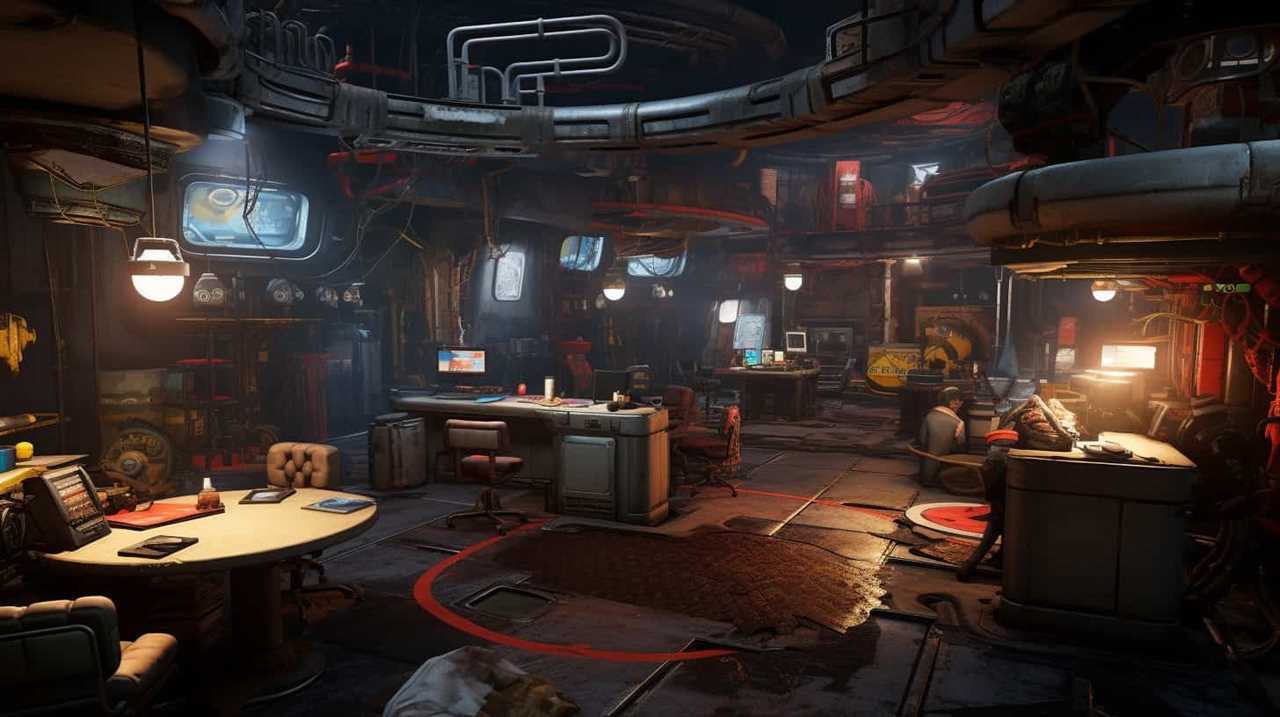
-
Dynamic Environments: Our AI algorithms generate and modify virtual environments based on player actions, ensuring that the game world evolves and adapts to the player’s choices and preferences.
-
Intelligent NPCs: Non-player characters in the game are powered by AI, allowing them to exhibit realistic behaviors, make decisions, and respond to the player’s actions in a dynamic and unpredictable manner.
-
Personalized Narratives: AI-driven storytelling techniques analyze player data, preferences, and actions to create personalized narratives, ensuring that each player’s experience is unique and tailored to their individual gameplay style.
-
Real-Time Adaptation: Our AI systems continuously monitor player inputs and adjust game mechanics, difficulty levels, and challenges in real-time, ensuring a dynamic and immersive gameplay experience.
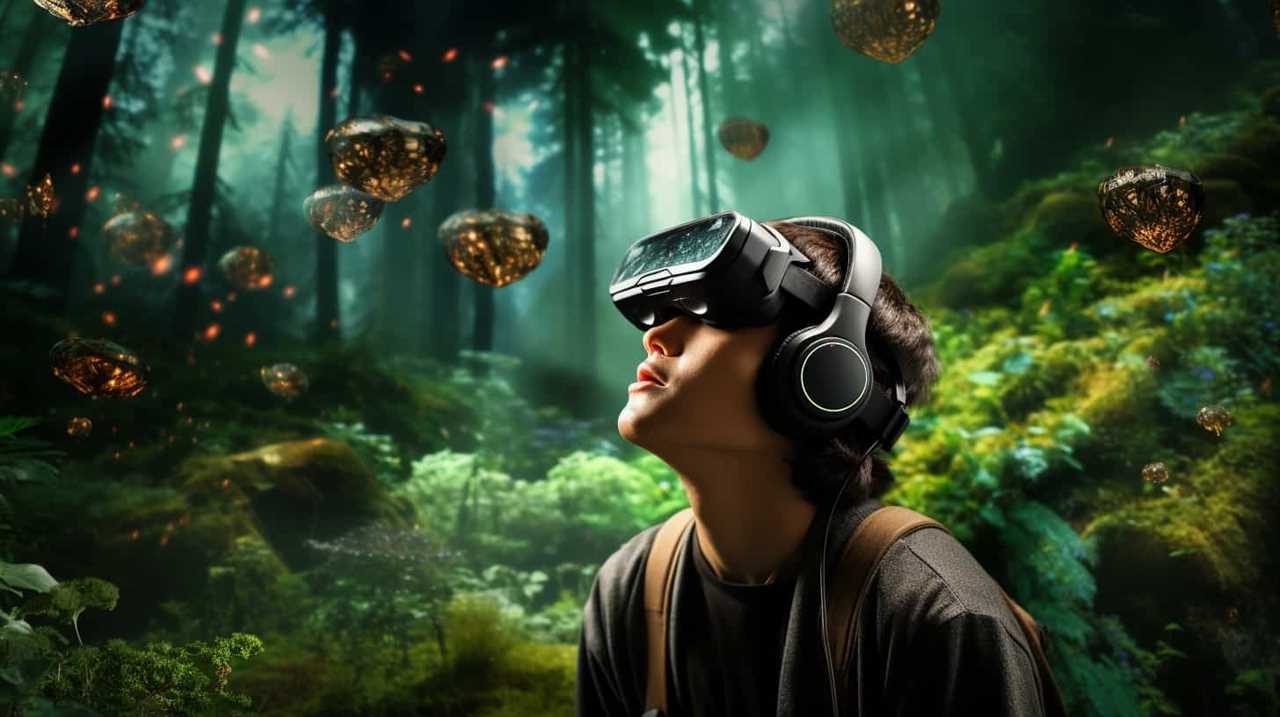
Frequently Asked Questions
What Are the Hardware Requirements for Playing VR Games?
To play VR games, we need specific VR hardware requirements and VR system specifications. These include a powerful computer with a high-performance processor, a capable graphics card, sufficient RAM, and compatible VR headsets and controllers.
How Does Generative AI Differ From Traditional AI in Gaming?
Generative AI, unlike traditional AI, revolutionizes VR gaming by creating dynamic and immersive virtual worlds. By harnessing its power, developers can generate realistic environments, characters, and gameplay, providing players with limitless possibilities and an unparalleled gaming experience.
Can Generative AI Be Used to Create Non-Player Characters (Npcs) in VR Games?
Yes, generative AI can be used to create NPCs in VR games. By using generative AI, we can explore the potential of creating dynamic NPC behaviors and character customization in VR games, enhancing the immersive experience.
Are There Any Limitations to Using Generative AI for Creating Realistic Environments?
Limitations and challenges exist when using generative AI for realistic environments in VR gaming. Factors like computational power, training data, and algorithm complexity can impact the level of realism achievable.
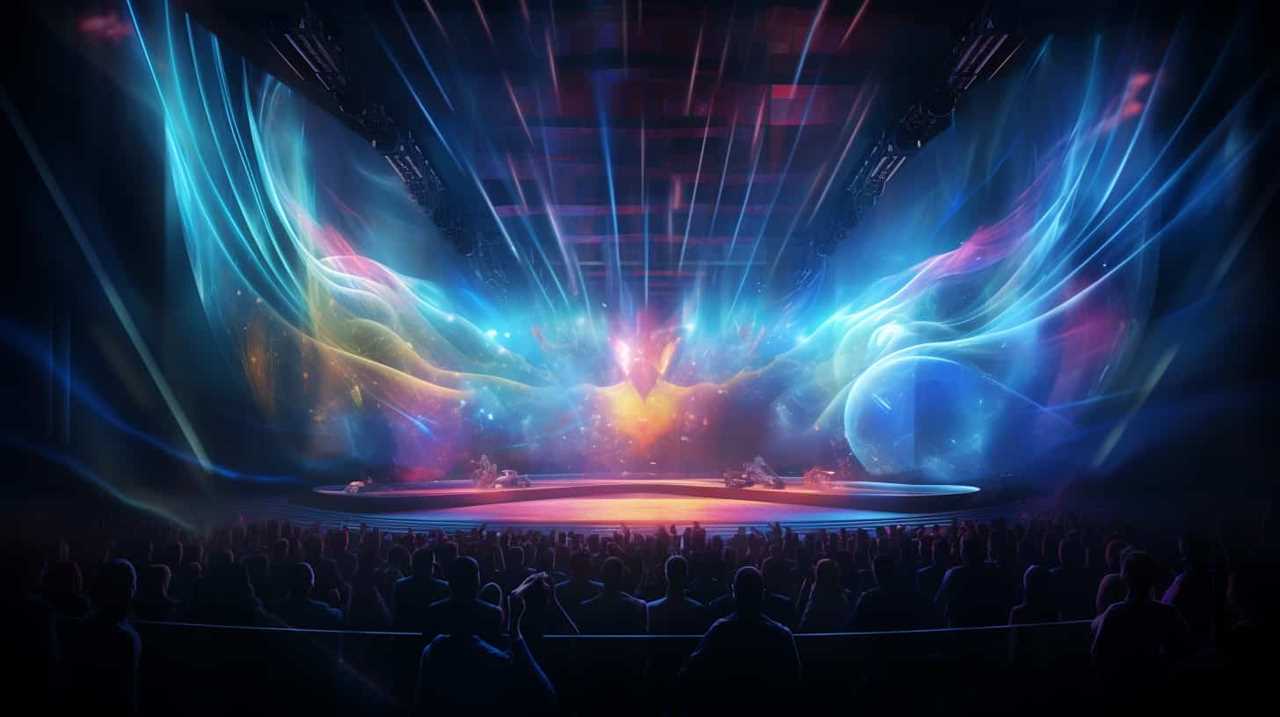
How Can Ai-Generated Content Enhance the Replayability of VR Games?
Using AI-generated content can enhance player immersion by creating realistic and dynamic environments in VR games. This not only increases game longevity but also provides players with a sense of freedom and endless possibilities for exploration and replayability.
Conclusion
In conclusion, by harnessing the power of generative AI, developers can create immersive VR gaming experiences that push the boundaries of realism.
One interesting statistic to consider is that according to a recent study, AI-generated virtual environments have been found to increase player engagement by 40%, allowing gamers to truly immerse themselves in a lifelike world.
With the advancements in AI technology, the possibilities for creating captivating and realistic VR gaming experiences are endless.



